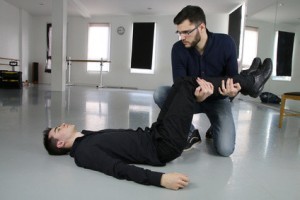Blackouts (Fainting, Syncope) Causes and First Aid
Passing out is a common term that is used to describe altered states of consciousness like sleeping to fainting at the extreme. Generally blackouts are not serious for most people. Recovery is quick and it may not occur again. The cause is sometimes not easy to identify. At other times blackouts can occur with serious underlying diseases or lead to serious complications.
What is a blackout?
A blackout is also known as fainting or by the medical term syncope but can also apply to a period of time when a person cannot recall anything like during excessive alcohol consumption (alcohol blackouts). Fainting or syncope is where there is a loss of consciousness as a result of disturbances in brain activity that is required to maintain consciousness. It should not be mistaken for sleep.
Blackouts are temporary. Most people will recover after a short period of being unconscious. It is usually not fatal but in certain circumstances, like experiencing a blackout when driving or when using heavy machinery, it can lead to serious and even deadly consequences. Even falling and striking the head on the floor can be life threatening depending on the surface and force of impact with the floor.
Most blackouts are preceded by a lightheaded feeling or dizziness. Often people also experience alterations in vision, smell, taste and hearing just prior to fainting. Confusion, headaches, perspiration, twitches and seizures may also precede a blackout. However, in some cases a person may blackout without any prior warning signs. There may also be loss of memory, confusion and difficulty speaking after recovering from a fainting spell.
Causes of Blackouts
Any disturbance to brain activity may lead to a blackout. It may not always be as direct and obvious as a blow to the head. Even a disruption of blood supply, oxygen or glucose levels can disrupt the normal functioning of the brain within minutes or even seconds and result in a blackout.
Head and Brain Insults
There are various ways in which the brain can be injured and its functioning disturbed. The most obvious would be a blow to the head as may occur with a fall and striking the head, vehicle collision injuries, contact sports and during a physical assault. Even a mild head injury can lead to a blackout. In these cases the force causes disruption of brain activity (concussion). Other ways in which a traumatic head and brain injury may also occur with:
- Meningitis (infection of the lining around the brain) and encephalitis (infection of the brain).
- Electrocution or electroshock therapy.
- Surgery to the head and specifically within the intracranial cavity.
- Hemorrhage (bleeding) within the brain.
- Blockage of a blood vessel in the brain.
- Stroke where there is death of brain tissue with an interruption in blood supply to the brain.
- Tumors in and around the brain.
- Spinal cord injury, especially of the upper part of the spinal cord.
Other brain conditions and mental health diseases where blackouts may occur even without a clearly identifying insult includes:
- Seizures and epilepsy.
- Parkinson’s disease
- Nutritional deficiencies that affect brain and nerve function.
- Dementia
- Depression
- Emotional trauma, including grief and fear.
Drugs and Substances
Various substances, including medication, can disrupt brain activity directly or indirectly by altering blood oxygen, circulation and blood glucose levels.
- Alcohol (excessive quantity)
- Illicit drugs
- Drugs such as high blood pressure medication (overdose), insulin and other glucose-lowering agent (overdose), anti-epileptic drugs, cancer drugs and sedatives.
- Poisoning (intentional or accidental).
Circulation and Oxygen
The brain needs a steady flow of blood to continue functioning. Blood carries oxygen and nutrients that is required by the brain tissue. In fact the brain tissue is considered as the most oxygen-sensitive tissue in the body.
- Arrhythmias where the heart rate becomes irregular.
- Myocardial infarction (heart attack).
- Heart valve disease and defects.
- Severe or sudden hypotension (low blood pressure). Postural hypotension where the blood pressure does not optimum level during changes in position.
- Vasovagal reaction where triggers like strong emotions alters blood pressure and heart rate.
- Cardiogenic shock where the heart cannot pump blood properly or hypovolemic shock where the volume of blood is reduced.
- Anemia where the blood’s oxygen-carrying capacity is impaired.
- Asphyxiation where the blood oxygen drops to very low levels with choking or suffocation.
Other Causes
- Dehydration.
- Injections or having blood drawn.
- Hypoglycemia where the blood glucose levels drop.
- Severe lung diseases where oxygenation is affected.
- Extremely hot environmental conditions.
- Severe pain which may also be related to a vasovagal reaction.
Unknown causes although these episodes are often linked to blood glucose levels, blood pressure or heart rate changes.
Prevention and First Aid
These are some of the measures that need to be implemented when a person feels lightheaded or dizzy, which usually precedes a blackout. It may even prevent a blackout. Even when a blackout does occur, certain actions are necessary to prevent injury or serious complications.
- Sit down immediately whether on a chair or floor. Lie down flat if possible. Place the head between the knees if sitting. This can help with blood flow to the brain and may at least reduce the chance of injury in the event of a blackout.
- Drink fluids slowly. Sip slowly on cool water or a sugary drink. If meals have been missed, try to eat something soft with small bites and chewing carefully.
- Stand up slowly once the symptoms like lightheadedness and dizziness ease. Ensure there is sufficient support like sturdy objects to hold.
- Raising the legs above the level of the heart can help to increase blood flow back to the heart and to the brain but should only be done if there are no injuries to the legs, like fractured bones.
- If a person has already fainted, lay them flat with support under the neck, ensure that they are breathing and the pulse is present and strong. Immediately call for medical attention.
- Do not move a person unless necessary, especially when spinal injury is suspected. Placing a person on their side, with their head titled back is advisable if it is safe to move a person. Call for medical services.


